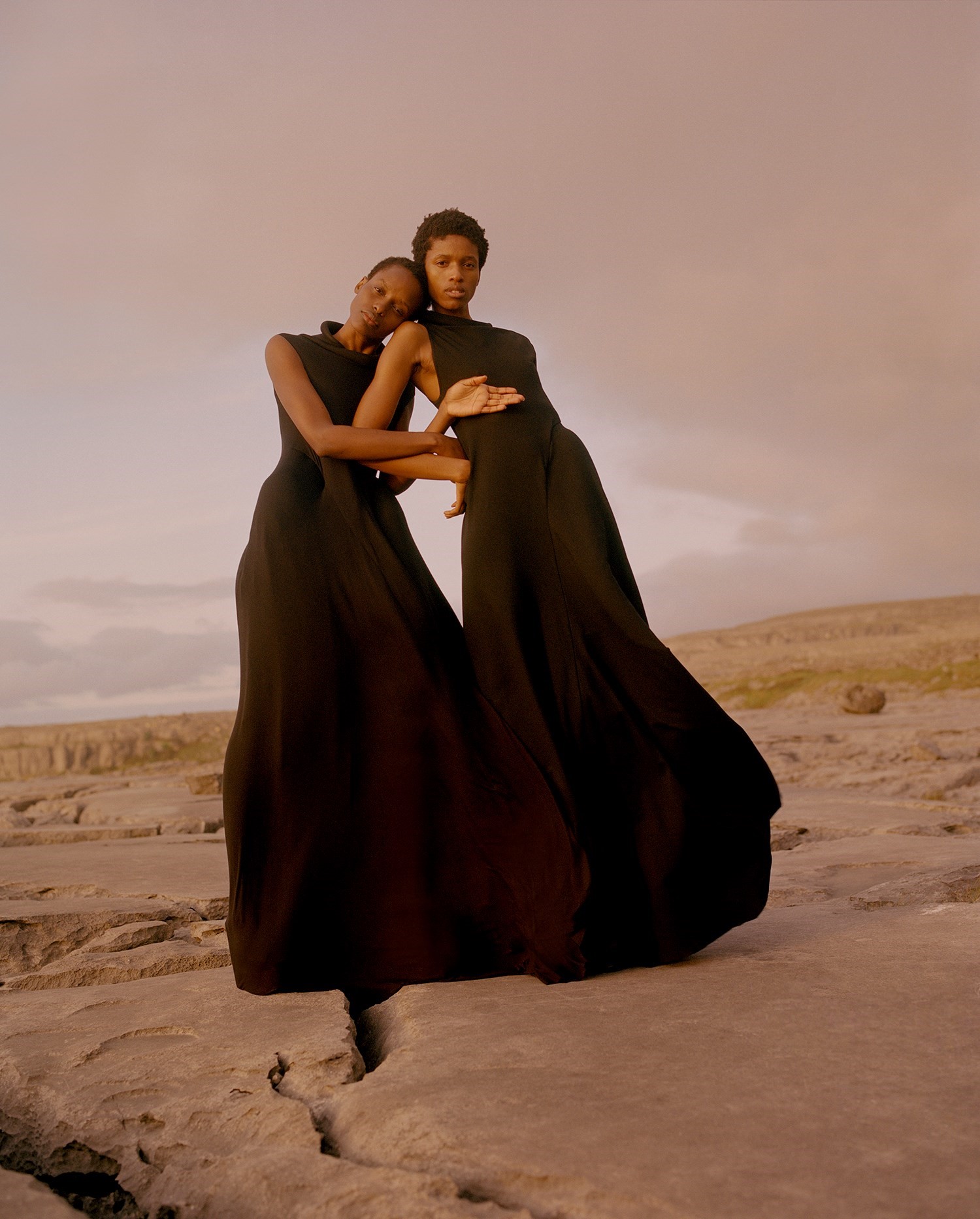AnOther has partnered with 1 Granary to create a series of Emerging Talent pieces, celebrating some of the most exciting upcoming creatives working in fashion design today.
Designer Michael Stewart knows the meaning of craftsmanship. His hands gesticulate rhythmically as he talks through the intricate techniques behind his sculptural and striking gowns, explaining how he tacked jersey by hand, polished aluminium jewellery and manipulated layers of foam padding. “The way I work is really organic. I won’t let a drawing lead me. I really feel what the fabric wants me to do,” he says of his methodology. “I really value craft. I like the idea of something having a resonance. I once saw a contemporary piece of lace that took one hundred hours to make, it was mind-blowing. All those hours are condensed into one object,” he continues.
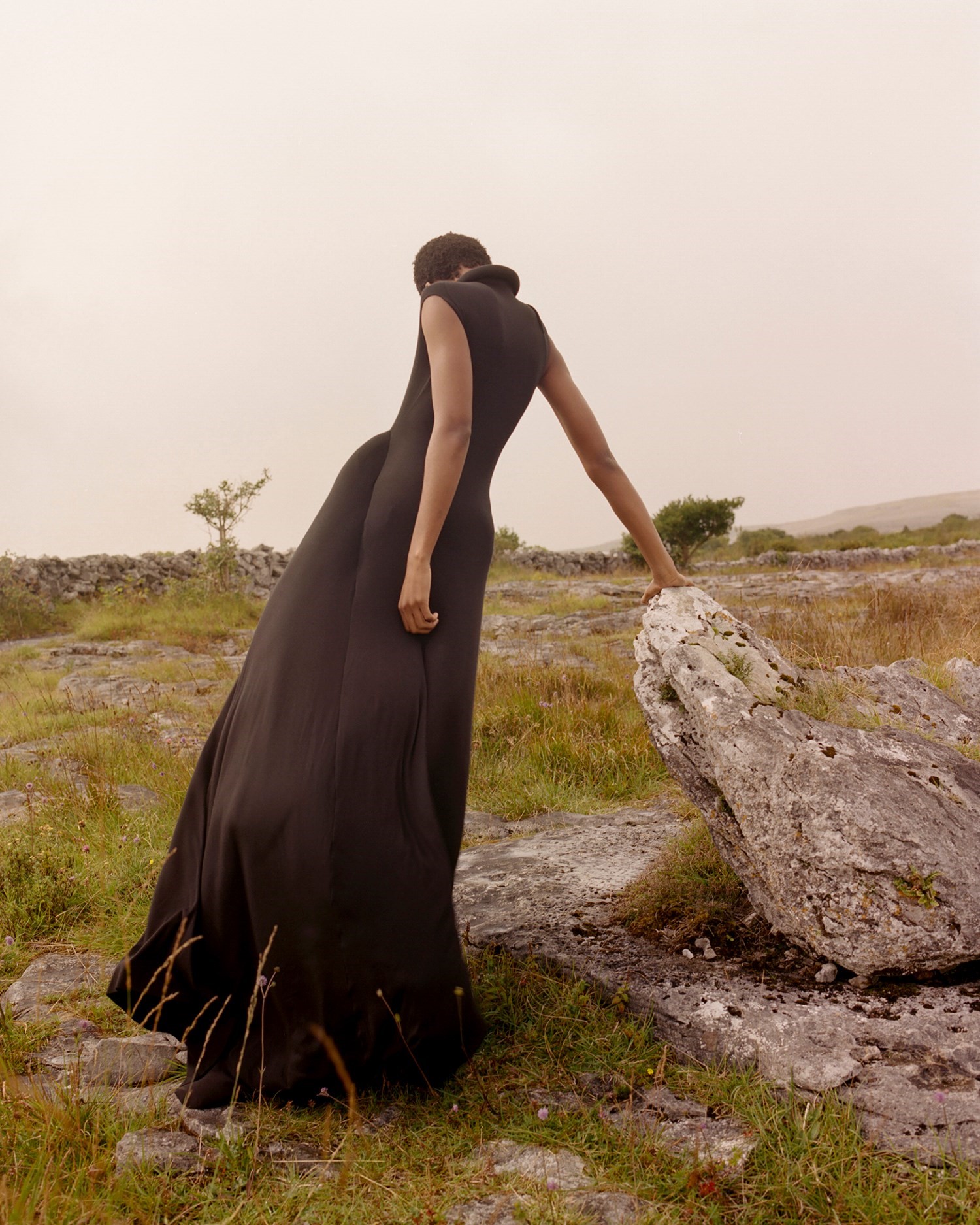
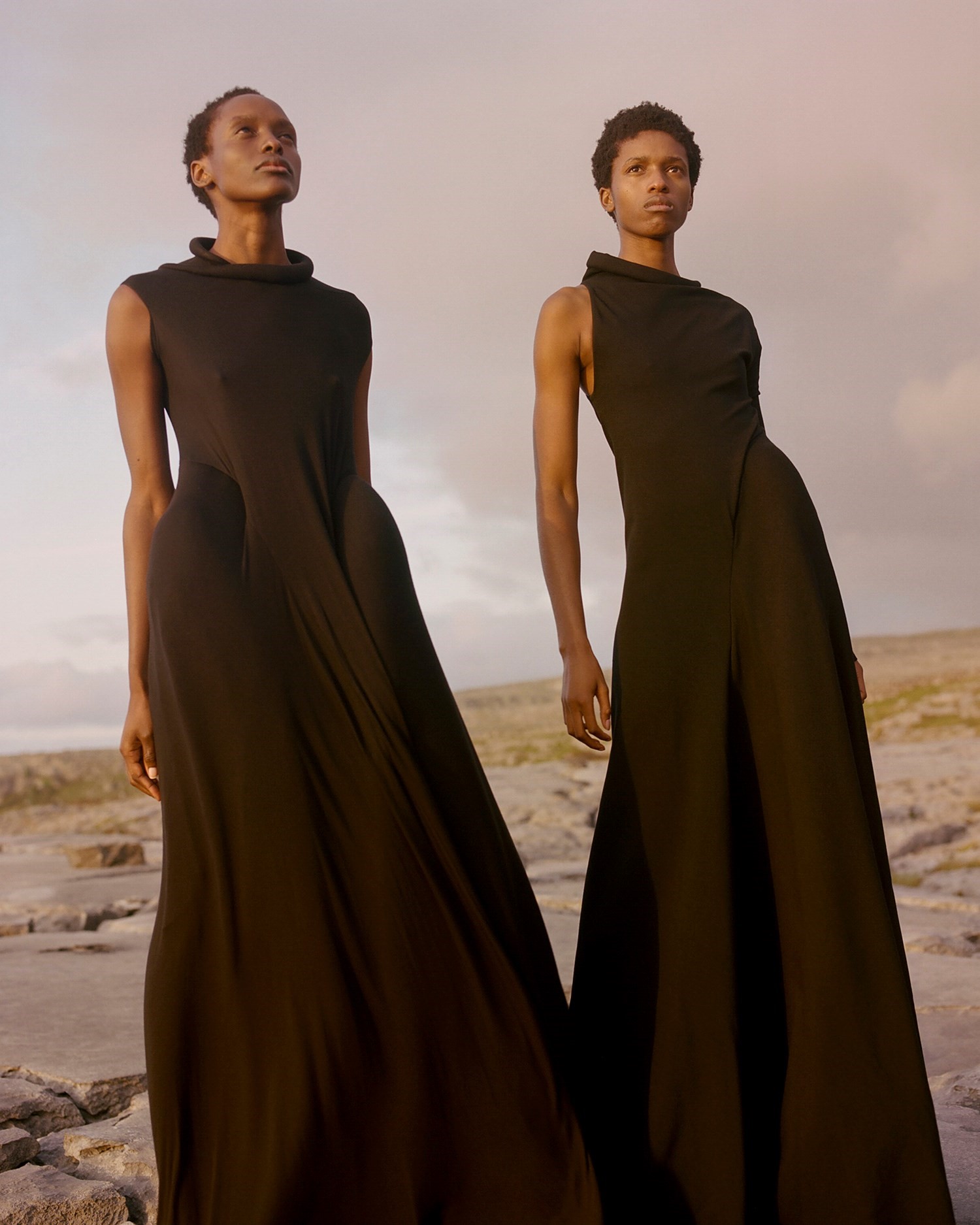
Such a hands-on sensibility was evident in Stewart’s MA graduate collection, presented at the Royal College of Art in June this year. His draped monochrome dresses were lined with organic shapes placed strategically around the body to create alien-like silhouettes. His statuesque clothes are almost reminiscent of the classical designs of Madame Grès, Rei Kawakubo’s Lumps and Bumps collection for Comme des Garçons, or the rule-bending work of Rick Owens. “I love when people create economically,” he says. “I appreciate when someone can paint a few lines, and a whole image emerges. That’s true skill.”
“I appreciate when someone can paint a few lines, and a whole image emerges. That’s true skill” – Michael Stewart
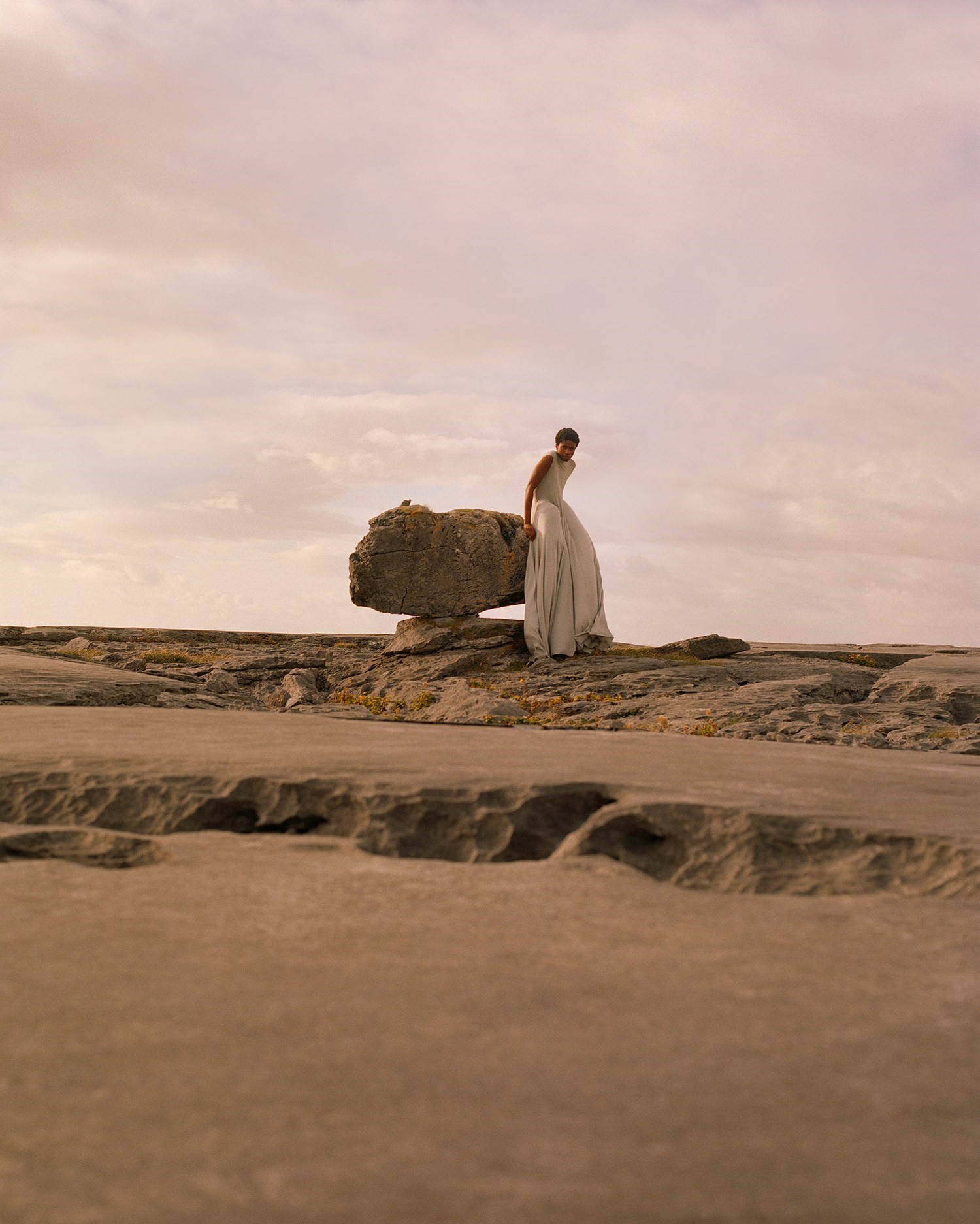

Born in a small Irish village in County Clare, Stewart was exposed to prehistoric sculptures and ancient burial sites from an early age, as they surrounded the rural area in which he grew up. As such the emerging designer developed a fascination with anthropology, which would ultimately feed into his MA research, taking inspiration from traces of early culture, including hand-carved figurines of deities and primitive drawings. “By translating these sculptural relics to a garment, I’m reanimating those ancient things, giving them a body,” he explains. This is most tangible in the curvaceous metal accessories used to close his gowns, with the shapes drawn from the cave paintings of Lascaux, which are said to illustrate the feeling of being in trance. “I read that this state felt, for whoever was experiencing it, to be like their bones were being picked out of their bodies one by one, getting polished, and being put back in. I wanted the silver sculptures to look like those deformed bones.”
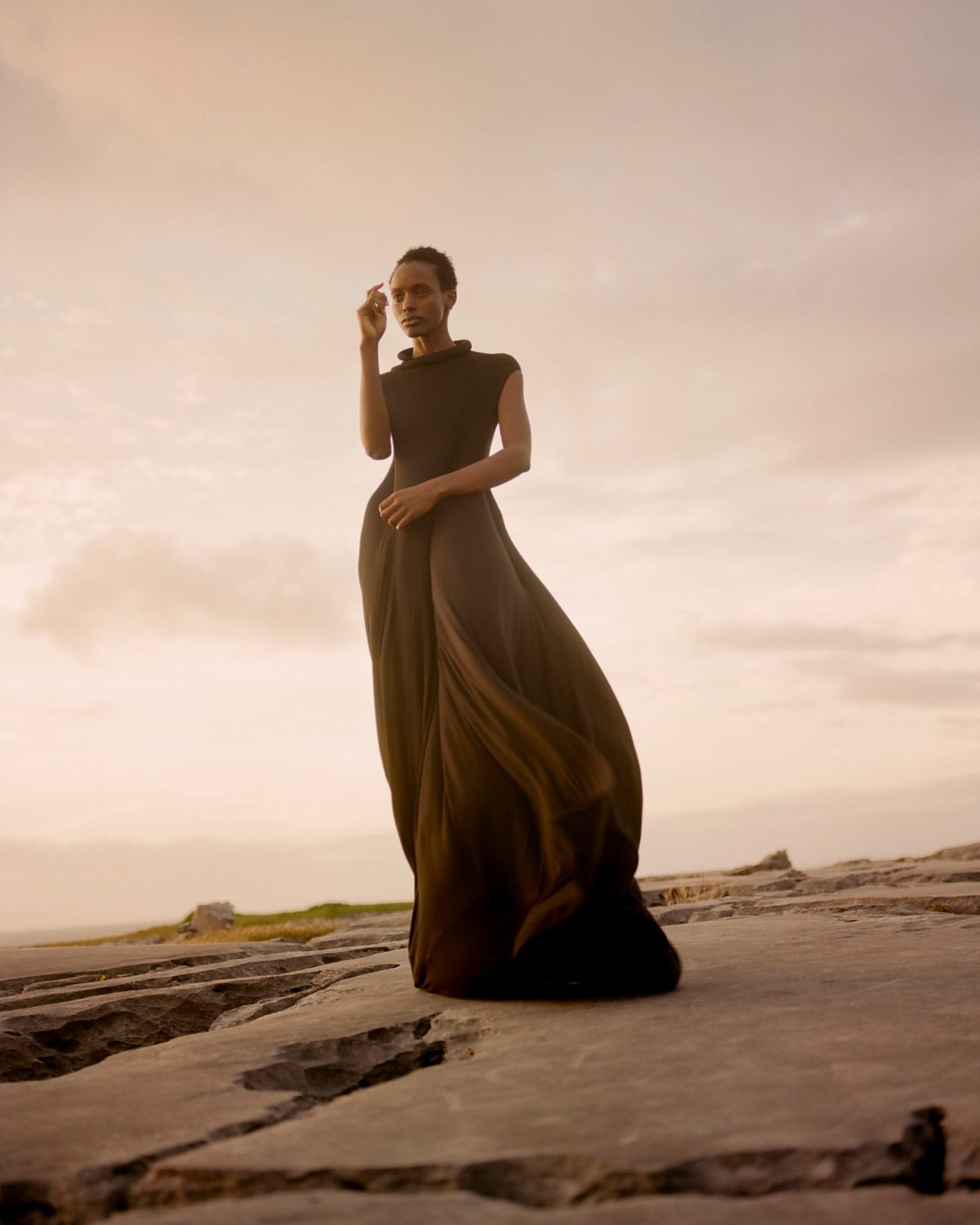
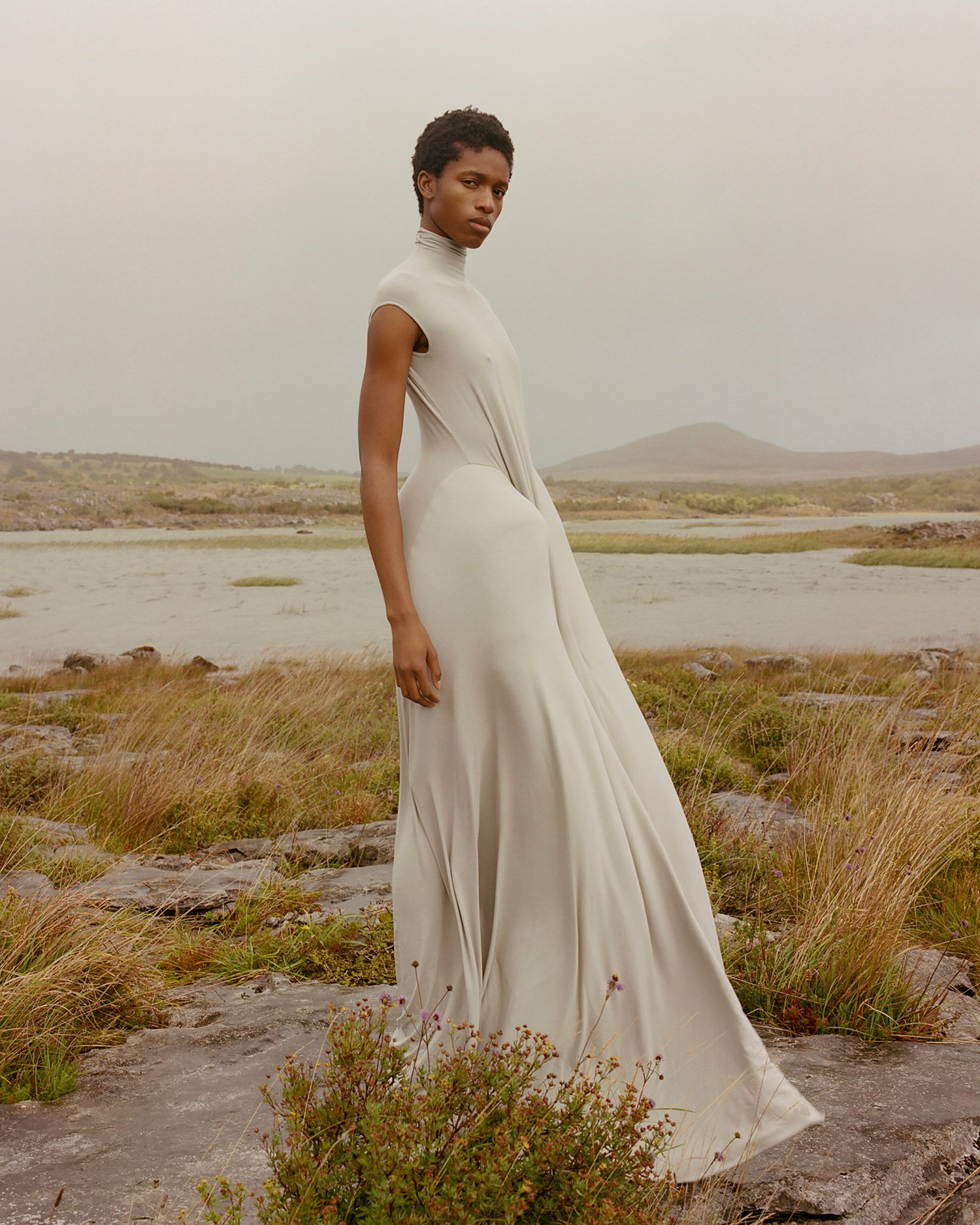
Ultimately, Stewart’s work stems from a wish to create something that is neither nostalgic nor futuristic, but entirely atemporal. “Some things are so ancient they look almost futuristic. There’s this stripping back of aesthetics,” he notes. It is the reason why locations such as Stonehenge always seem to be surrounded with alien conspiracy theories. In our collective consciousness, those ancient relics are revived through imagination and personal interpretation. Somewhere between a prehistoric past and an unimaginable future, the structures have absorbed the essence of civilisation.
Such a unique perspective is mirrored in a similarly unusual approach to garment construction. “I have to see everything in front of me in 3D, I could never make my garments in flat. I need to do things my own way,” he says, citing the game-changing technical tailoring of American designers Geoffrey Beene and Charles James, as highly influential to the way he works. “I looked at their work for the seam placement and how they would avoid putting in traditional seams. I always want the stitches to be as invisible as possible.”
“I have to see everything in front of me in 3D, I could never make my garments in flat. I need to do things my own way” – Michael Stewart
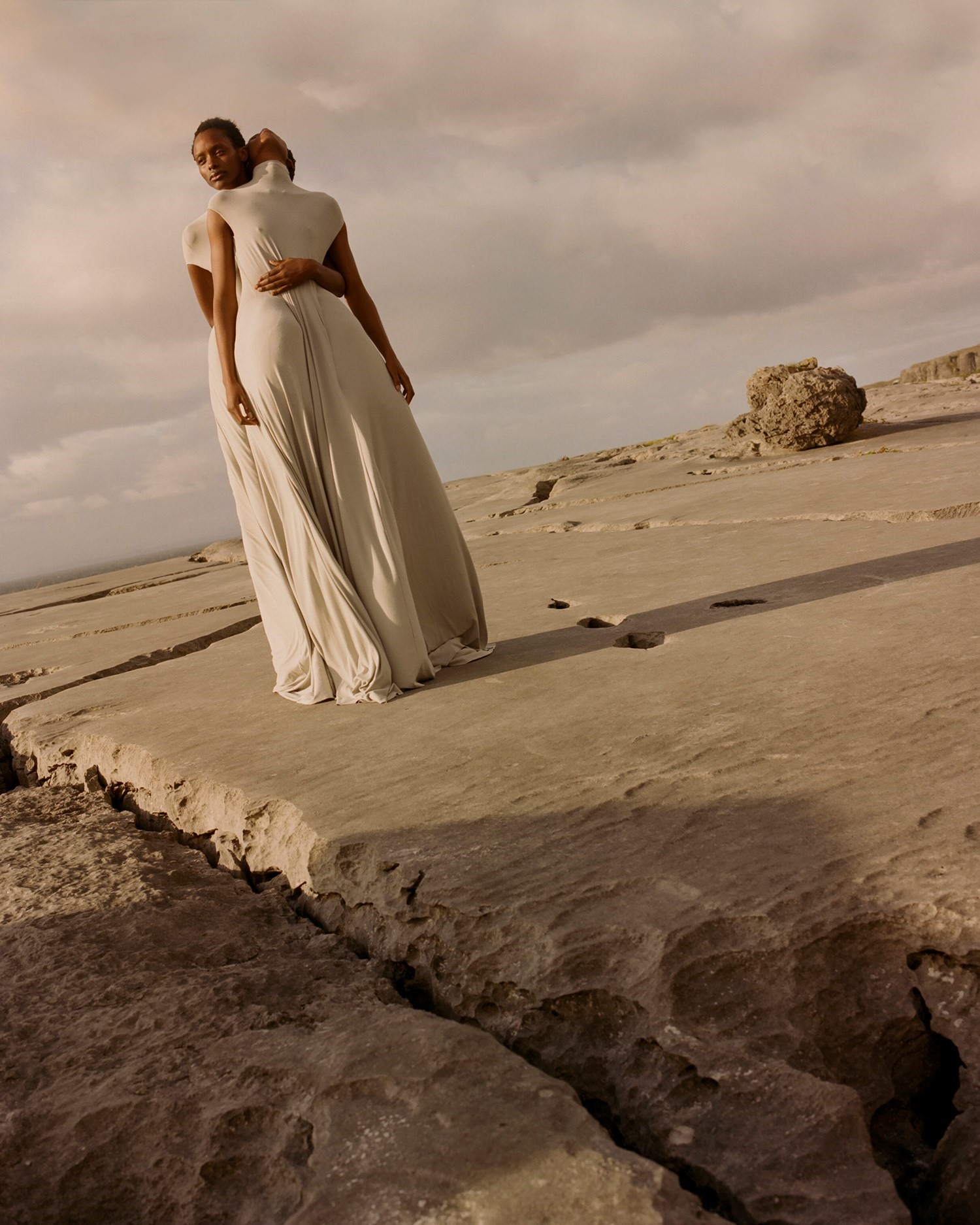
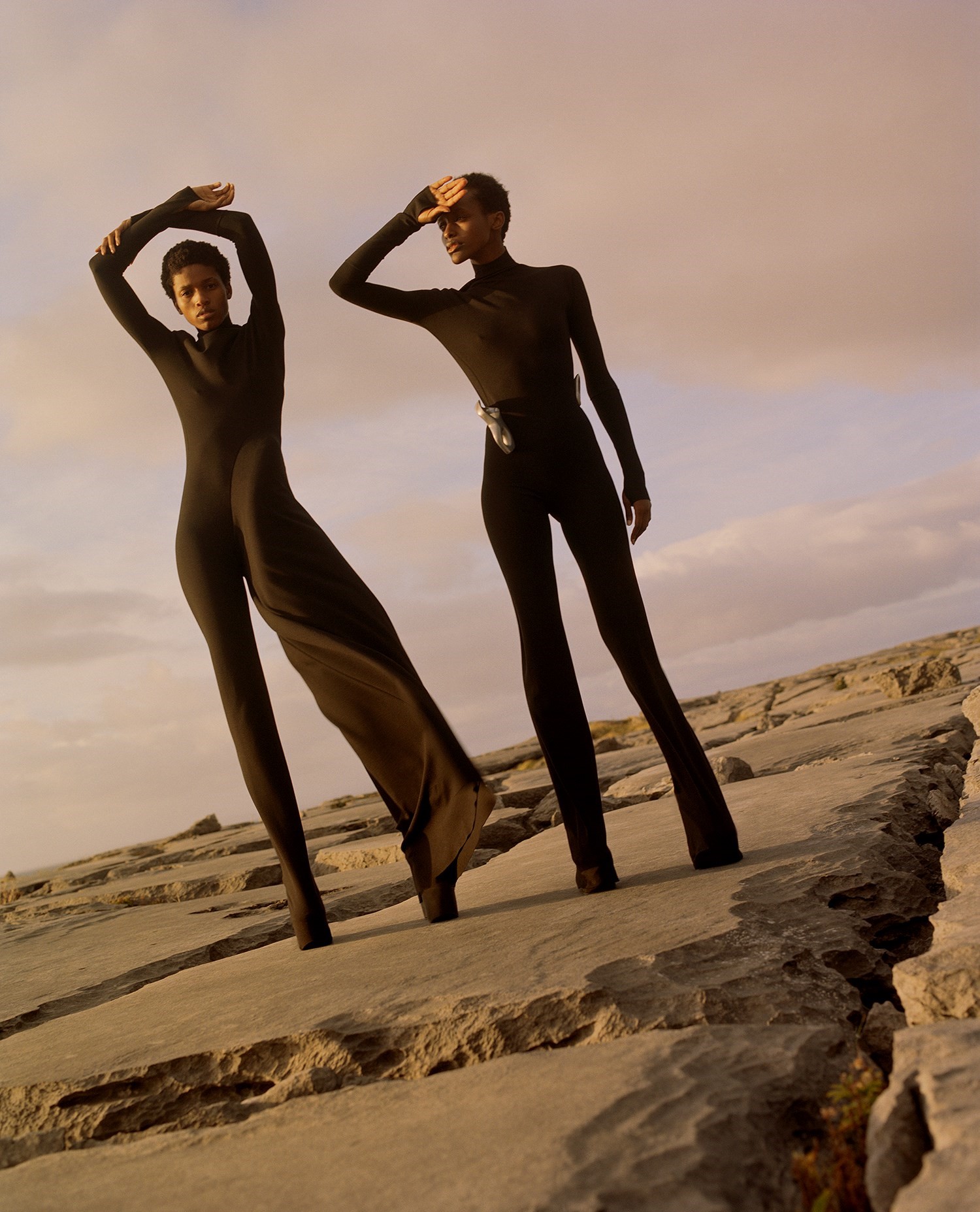
So what comes next for Stewart? “Part of me wants to start my own label – that has always been the plan,” he says. “But recently, I’ve been re-thinking. I’ve never created anything for anyone else, but I feel like I need to go away and work in couture to really train my eye and bring my skill to the next level.” Taking into consideration Stewart’s uncompromising view on technicality evidenced in his graven silhouettes, it is clear that haute couture may be the correct path for him follow. Whatever the future holds, we believe it to be bright.
